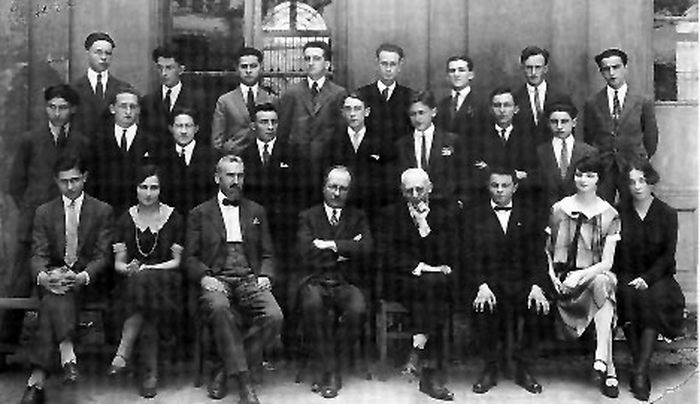The importance of chance encounters
Emma Tenzler recounts three chance encounters from history which went on to redefine literature

The air in the Cambridge Women’s Union was heavy with alcohol, jazz, and ambition. Pieces of poetry, drunkenly recited, cut through the dancing mass of half-stumbling boys and girls fumbling for the right words between twists and jives. Twenty-three-year-old Sylvia Plath had an essay on Racine to write, poems to publish (she was anxiously awaiting the rejection of two by The New Yorker), and a date in tow who was almost as drunk as she was. Mid-dance with her companion, a “big, dark, hunky boy” crossed the floor to introduce himself.
Ted Hughes, unhappily employed as a film reader in London, found himself unable to let go of the university he had graduated from two years prior. Plath recited bits of his poem Law in the Country of the Cats to him. Hughes dragged her into another room. More whisky, a bottle broached, and a bleeding cheek later, Sylvia Plath and Ted Hughes had become an irrevocable part of each other. Their infamous marriage – four months after their encounter at the launch of Hughes’ St. Botolph’s Review in February 1956 – would witness prodigious creativity from both, overshadowed by the suffering of Plath as her mental state deteriorated due to Hughes’ infidelity and abuse.
Plath, both infamously and tragically, died in 1963. But her writing has endured, just like the myth of her first encounter with Hughes on that drunken student night. Art is drawn from life, and the history of art is defined by chance encounters – as two other instances in literary history (with infinitely more positive consequences) show.
“Art is drawn from life, and the history of art is defined by chance encounters”
The lecture hall of Charles University in Prague smelled of smoke and intellect. The young law student Franz Kafka hurried into a talk on Arthur Schopenhauer organised by the German Literary Society. Max Brod, law student and burgeoning writer, talked philosophy and answered the critical questions of the serious, hawkish young man. Kafka and Brod walked each other home that night several times, too engrossed in discussion to let go of their encounter – or so the myth goes.
Myth or not, the encounter between Franz Kafka and Max Brod on 23 October 1902 would birth one of the most fruitful and touching friendships in literary history. Kafka wrote; Brod encouraged. Kafka doubted; Brod, to little avail, sent his friend’s work to leading German publishers. When the former passed away prematurely, Brod – breaking the promise his dying friend had extracted from him – did not burn Kafka’s texts. Rather, Max Brod would spend his life managing the literary legacy of his friend.
On one of the last trains that left Nazi-occupied Prague in 1939, the Jewish Max Brod opened his suitcase for mandatory inspection. The inspector frowned at the bundle of papers within it, left, and Brod, his wife, and the literary work of one of the greatest writers in history rolled to safety.
“The Cambridge art scene seems a likely setting for such encounters”
The dinner party heard literature debated over champagne and canapés. Clive Bell, writer, art theorist, and brother-in-law of Virginia Woolf, had invited London’s intellectual elite to dine with him. Among them was the infamous writer and journalist Vita Sackville-West. “She writes fifteen pages a day… knows everyone. But could I ever know her?” Virginia Woolf wrote in her diary the morning after encountering the “lovely, gifted, aristocratic” Sackville-West for the first time on 22 December 1922.
Know her she did. The loving and prolific relationship that ensued witnessed a series of stunning love letters, several books published by Sackville-West through the Hogarth Press run by Woolf and her husband, and Woolf’s genre-defying, gender-bending novel Orlando, published in 1928. The fictional biography eternalised Sackville-West and her lineage in what Nigel Nicolson has famously called “the longest and most charming love letter in literature”. The letter endured the love, which ended with Virginia Woolf’s death in 1941.
Timeless art is made because of chance encounters between people who look for inspiration in the other and find it – for better or worse. The Cambridge art scene seems a likely setting for such encounters. The fruitful consequences enjoyed by Kafka, Brod, Woolf, and Sackville-West as a result of their chance encounters show that staying open to unplanned interactions outside the busy, structured student routine can be the catalyst for literary friendship, poetic love, and great art.
Want to share your thoughts on this article? Send us a letter to letters@varsity.co.uk or by using this form.
 News / Candidates clash over Chancellorship25 April 2025
News / Candidates clash over Chancellorship25 April 2025 Interviews / Dr Ally Louks on going viral for all the wrong reasons25 April 2025
Interviews / Dr Ally Louks on going viral for all the wrong reasons25 April 2025 Music / The pipes are calling: the life of a Cambridge Organ Scholar25 April 2025
Music / The pipes are calling: the life of a Cambridge Organ Scholar25 April 2025 News / Cambridge professor paid over $1 million for FBI intel since 199125 April 2025
News / Cambridge professor paid over $1 million for FBI intel since 199125 April 2025 Arts / Plays and playing truant: Stephen Fry’s Cambridge25 April 2025
Arts / Plays and playing truant: Stephen Fry’s Cambridge25 April 2025






